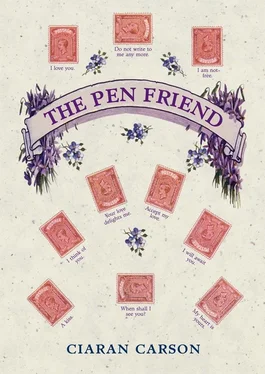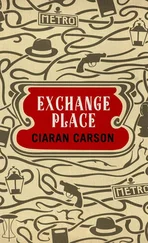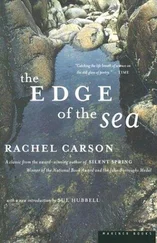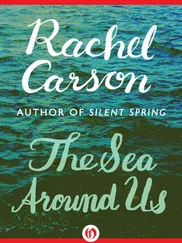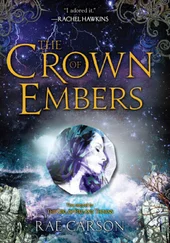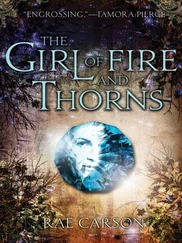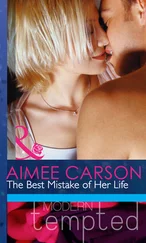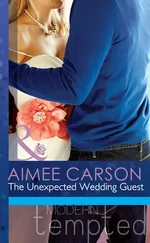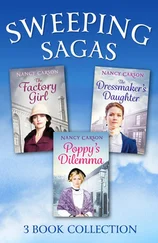Made for and presumably used by a lady’s hand, the Sheaffer sits tolerably well in mine, though I must hold myself somewhat differently, and there is only the ghost of a scratch to its nib as I write. The point is finer and more rigid than that of the Wearever, and it seems to discipline my writing to a different mode as the words come forth, and I wonder whose hand held this pen before me, what assignations it communicated, its jade cylinder resting on a dressing table between words, among scent bottles of pale amethyst and frosted lilac and delicate opal. It carries a perfume which is not ink alone, a residue of someone else, of chiffon scarves of coral and apple-green and lavender and faint orange billowing in the slipstream of a Duofold Mandarin Yellow open-topped tourer, colours dappling the faces of the laughing foursome as they drive through a leafy tunnel and faint jazz music ebbs and flows down through the trees from the white ocean-liner of a house built on the cliff edge.
I try to picture the face of the woman who held this pen before me, eighty years ago, and instead see your face, as you might imagine, for you knew I would be thus intrigued when you wrote that single phrase, that slender horizontal lightning-bolt, It’s been a long time . I see you as you were then, but also as you might be now. You were two years younger than me, so you’re fifty-five. I put lines in your brow, and guess what wrinkles might have accrued at the corners of eyes and mouth, and flesh out the neck a little, and add some pouches to the cheeks, streaks of grey to the black hair, and it is still you, what you have become. In any case I’d know you by the amber fleck in that left eye of yours, not so much flaw as beauty-spot. I’d know you anywhere.
When York Minster was struck by lightning in 1984, and its South Transept razed by the subsequent fire, it was discovered that the four-hundred-year-old stained glass of the great Rose Window, made to commemorate the defeat of the House of York in the Wars of the Roses, had been riven into some forty thousand fragments, though the panels had miraculously stayed intact within their embrasures, having been releaded some years previously. Restoration began. Adhesive plastic film was applied to the crazed mosaic of the glass panels, which were then removed one by one, disassembled, and reassembled, tessera by tessera, using a specially developed fixative which had the same refractive index as the old glass, whereupon the completed work was sandwiched between two layers of clear glass for added security, and mounted back in place: which intervention means we will never again see what was seen before the fire, the dims and glows of stained glass unmitigated by an added medium, however clear. We two saw the glass as it was, as it had been.
I write to try to see you as you were, or what you have become. You left no forwarding address: that was part of your intention. For when we wrote those letters to each other all those years ago, we wrote as much for ourselves as for each other; as much to ourselves as to each other. Promising to be in touch, you drifted out of the XL Café. Your perfume lingered. Arpège , that’s what it was, not L’Air du Temps . Jasmine and rose borne by musk with a hint of sparkling green in its depths.
I had spent a week planning a new approach to my Esperanto book (it would be written in longhand with various fountain pens for one thing, each appropriate to a particular strand of the narrative) when your second card arrived, and threw me somewhat out of kilter. Lightning does strike twice. I remember hearing, in 1983, midway through our time together, of the death of the man — an American park-ranger — who had been struck by lightning seven times in his life. And statistics show that it is more likely for a person to be struck by lightning in the United Kingdom, than to be the victim of a terrorist attack; though whether that applied to Northern Ireland in the 1980s, and to Belfast in particular, might well require another computation. In any event I did not know whether to be more surprised by your second missive than by the first. On reflection, perhaps I had subconsciously expected it. Viewed by itself, that first postcard was unprecedented; or, retrospectively, it was a postscript, an addendum to our previous correspondence, however protracted the interval, the culmination of a long concatenation of mental processes which did not necessarily include me, of circumstances beyond your ken perhaps, of planetary influences for all I know, which led inexorably to your decision to communicate yourself to me again through those few words; and when I thought about it, I realised that when we say, It’s been a long time, we usually intend it as the preamble to a mutual reminiscence, queries as to how the other party has been faring all those months or years. It opens up a conversation. And when we part we say, We must keep in touch.
This message was equally laconic: It’s easy to remember , you wrote. Again, you left no signature. The stamp was postmarked London, one week after the first. I pondered the words for some time, thinking that there are many things which are not easy to remember, that there are things so forgotten as to be beyond recall, or that there are things whose implications will be fully realised only in the future, and even then perhaps not by the person whom they most concern. Be that as it may, I was more struck by the image on your postcard than by your words, as I presume you had intended. The caption on the back bottom left reads thus: Two Dutchmen and Two Courtesans, Hanging Scroll, ink and colours on paper, Japan (Nagasaki), about 1800 . And on the bottom right, V & A Encounters, the meeting of Asia and Europe 1500–1800, sponsored by Nomura .
The image was familiar to me because I had seen its original in that very exhibition, held in the Victoria and Albert Museum in the autumn of 2004. On 9th October, to be precise, on which day I attained the age of fifty-six: it was my birthday gift to myself to spend a few days in London, a city I have always loved, a city that you loved. And it struck me that you might have been there that day in the V & A, that you might have seen and known me, however changed I was, whatever I’d become, you might have shared the same gallery space as me, and breathed the air that I breathed. We might have brushed against each other unwittingly, or unseeingly. I had visited the museum shop at the end of my visit. Perhaps you bought the postcard then, one of a batch as aides-mémoire of the exhibition, which had lain forgotten in a drawer until now. Or it was meant for someone else, and thinking twice you thought better of it. Perhaps it was intended for me all along, that even then you planned it. I could have bought that very card myself, but was distracted by a book on eighteenth-century costume; and perhaps as I browsed its colour plates of elaborate brocades you were paying for this card I keep flicking my eyes to as I write, and I was oblivious to the beep of the till that signalled the transaction.
Two Dutchmen and Two Courtesans : when we went out for our first meal together, you insisted it should be a Dutch treat, and when I demurred, you said it was only proper, since you were half-Dutch. I saw a glint in your amber-flecked eye. The name on your birth certificate was Bouwer, you said, and you had changed it to Bowyer by deed poll when your father died. Bouwer meant ‘builder’ in Dutch; you had always disliked it. Your father, Arie Bouwer, had been active in the resistance movement known as PAN — Partisan Action Netherlands — founded in 1943 in Eindhoven, where he was an electronics engineer in the Philips factory. As you told me something of his story, an image of the Philips Bakelite radio I used to listen to as a child flickered in and out of my mind’s eye, and I saw myself spinning the needle past the lit linear blips of the stations, Athlone, Hilversum, Warsaw, Moscow, to a storm of gabbled languages and machine-gun bursts of Morse and static. The partisans, you said, had been organised into cells which communicated chiefly by telephone, and your father had been instrumental in further refining the system by linking it to the underground cabling of the Eindhoven factory. Everyone in PAN had a nom de guerre; when they did meet face to face they wore masks. No member knew the identities of the others, beyond their being agents of a common cause. And what was your father’s nom de guerre? I asked. He was known as Harry, you said, and when I queried the efficacy of an alias that was so close to the original, you replied that the best place to hide a thing was in plain sight, and referred me to the Edgar Allan Poe story, ‘The Purloined Letter’, where the letter in question has been stuck by the thief in a letter rack, under the noses of the investigating constabulary, and only the private consultant Dupin — the precursor of Sherlock Holmes — has the eyes to see that the letter has been disguised as itself.
Читать дальше
